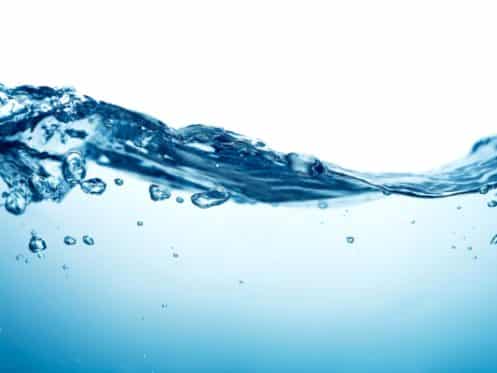Updated: August 2023
An air conditioning unit keeps your residence cool and cozy by pulling humidity and heat from the indoor air. As your AC extracts excessive moisture from your interior, it produces water or condensation in your air handler or furnace. This condensate collects in a drain pan before being sent through the drain pipe into your house’s drain system. If some components of your air conditioning unit break down, malfunction, or get clogged or damaged, you’ll notice water leaks from the equipment.
If you don’t address the minor leaks in time, the water can destroy your walls, floors, and ceilings. Mold can also develop in moisture-ridden parts of your home, polluting indoor air. Additionally, AC leakages can negatively impact the efficiency and performance of your unit. And before you know it, your AC is not switching on or is insufficiently cooling your house. Here are the most common reasons for AC water leaks and tips to fix or prevent them.
1. Blocked Condensate Line
A clogged or blocked condensate line is one of the most common causes of AC water leaks. Cool condensate collects on the cold metal surface when hot and humid air circulates around the evaporator coils. The collected water drains into the pan underneath these loops in the air handler or furnace during the cooling process. As the cooling occurs, the water flows out of the unit’s pan into the drainpipe before the drain pan overflows. However, mineral deposits, mold, debris, and dirt can clog the AC drain with time, preventing water from flowing out smoothly.
Sooner or later, condensate may begin collecting in your air conditioning unit, backing up in the drain line, and eventually leaking into your floor. Some modern AC systems have an automatic cutoff switch that instantly switches off your air conditioning if it detects a clogged condensate line. This useful feature can help protect your home from water damage. Nonetheless, if your AC system does not include a cutoff switch, you’ll have to take action immediately. Your AC technician can properly unblock the condensate drain line without causing additional damage. However, investing in regular AC maintenance can prevent such blockages and help keep your system’s condensate line open and emptied.
2. Improper Installation
If you notice water leaks shortly after installing a new AC system, the reason might be an incorrect installation. If the air conditioning unit and its drainpipes are not proportional, water flow from the AC drain may get disrupted. The water may flow backward or collect at the same level if it cannot stream ahead. Your local technician can inspect the unit to ensure the drainpipes are a bit lower than the air conditioner to allow condensation to flow downhill toward the system’s drainage outlet. Additionally, they’ll make sure the air conditioner is on a flat and leveled surface. If your area is not smooth, the technician can balance your AC system by adjusting the concrete cover holding it.
If your home has window AC units, your technician can tilt the AC front part a little bit to allow the condensate to drain out via the backside. If the window AC is too flat, the water may flow in the opposite direction and collect on the floor of your home. Allow a certified AC professional to handle and install your unit to prevent this problem. These experts have the knowledge and expertise to install different air conditioner models and brands without errors.
3. Broken Condensate Pump
Some AC systems require a condensate pump to drain water properly. If your home’s central cooling and heating system is in your basement or away from your attic, it’ll be difficult for the condensate to flow out of your drain line. In such a scenario, you’ll need a condensate pump to eliminate water from your air conditioning unit. When the water level of the condensate pump reservoir goes up, the pump’s float switch turns on, prompting the pump to drain the condensate outside the house.
If the pump’s float switch malfunctions or the condensate pump breaks down, water will not get pumped out of the AC system, causing it to accumulate and spill from the unit. You cannot fix a malfunctioning or broken condensate pump yourself. Contact your HVAC technician to inspect your air conditioner and make the necessary repairs.
4. Dirty Filter
Experts recommend regularly changing your AC system’s filters to enhance performance and prevent leakages. If you fail to change your filters more often, they’ll become significantly dirty and clogged, limiting airflow in the unit. When the air circulating in the evaporator coils becomes too cold, the AC coils will freeze, causing ice to build up on and within your air conditioner. When the ice melts, water will start dripping, leading to AC water leaks.
Many air filters often last between one and two months. However, the rate at which you replace your filters mainly depends on where you reside. For example, you don’t need to change your filters as much on the days that the weather becomes colder since you will rarely use your AC unit. However, you should check your filter regularly to prevent water leaks when you use your air conditioning unit more frequently.
5. Frozen Evaporator Coils
AC evaporator coils can easily freeze due to refrigerant leakages or restricted airflow. Frozen evaporator coils often lead to moisture buildup in the AC, causing the drain pan to overflow. If you realize your AC system is freezing up, contact your HVAC technician to check the unit to determine the source of the problem. If there is airflow blockage, the professional will review your return vents, air filter, ductwork, and fan coils. Cleaning all these components can restore airflow and fix freezing coils and water leakage problems.
If changing the filter and cleaning the AC components don’t solve the problem, your air conditioning unit might be low on refrigerant. Inadequate refrigerant levels in your air conditioning unit can cause the evaporator coils to become too cold, leading to ice formations. Once the ice melts, you’ll notice water dripping from the machinery. Unfortunately, you can’t fix refrigerant problems since it’s dangerous. Your technician will identify the causes of the water leakages and fix them before refilling the AC refrigerant.
6. Damaged Drain Pan
You can find the AC drain overflow pan within the air handlers or underneath the unit’s evaporator coils. The work of the pan is to catch condensation from the AC as it drops. The condensation then flows into the system’s drain line and later drains outside the house. If your drain pan has cracks, water will start leaking rather than streaming into the unit’s drainpipe. Damaged drain pans are usually typical in aging AC units.
One of the common signs of an aging air conditioning unit is a rusty drain. If your system is over 15 years old, the drain pan might rust and even corrode, causing AC leaks. Check each corner of the AC drain pan and edges for holes or cracks. Although your technician can repair the small holes, replacing the pan is the most effective way of solving this problem.
Contact the Cooling Experts for Reliable Services
A leaking AC system will not only leave you uncomfortable during the summer months, but it can also lead to mold issues and water damage. Luckily, many AC leaks require easy fixes. If you’re experiencing AC unit leakages, contact our AC experts at A/C Doctors today. Our experts will inspect your air conditioning and perform the needed repairs or component replacements to restore the comfort of your residential property. We also offer air cleaners, heating, ductwork, central HVAC, and air quality services throughout Gilbert, AZ, and its surroundings.




